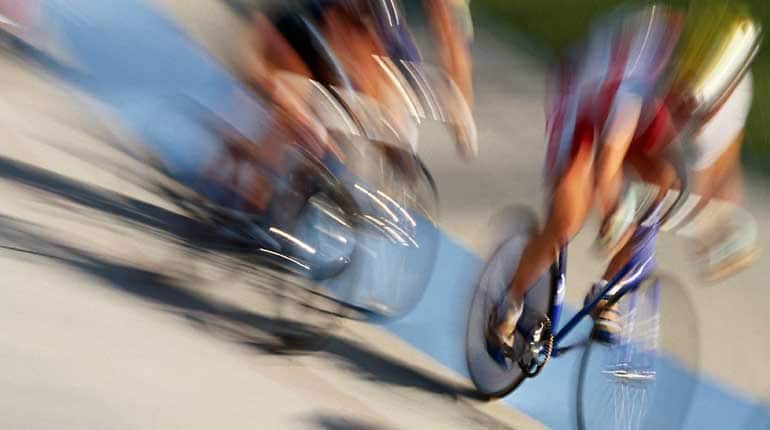Get Yourself Ready for the Spring | Avoid Sports, Recreational & Household Injuries With Some Preparation
Following a long, cold winter, it can be especially tempting to jump into spring-time activities in a wholehearted manner. Many of us may be heading outdoors to play golf, enjoy a bike ride, ski, walk, run on trails, rollerblade, or play other sports such as baseball, softball, and soccer. In fact, according to augustahealth.org, more than ten million sports injuries occur annually in the United States, and the majority of those injuries are due to overuse of muscles or joints or a traumatic injury.
As many as 95 percent of sports injuries are the result of minor trauma involving soft tissue injuries such as contusions, sprains and strains. Many of these sports injuries can be prevented through proper conditioning and training, using the proper equipment, and wearing appropriate protective gear.

Others who may not be jumping into springtime sports are instead performing tasks around the house which can sometimes lead to injuries. Activities such as cleaning out gutters, painting, cleaning-up the yard, getting gardens and flower beds cleaned up, planting, and generally sprucing up homes and yards are all prime candidates for potential injury if not performed safely.
The Following Tips Can Help You to Avoid Both Injuries From Sports and Recreational Activities as Well as Injuries from Household Chores
- Visit your doctor. Before you begin a new sport, jump back into one you have not done in a while, or decide to climb onto your roof to remove leaves from the gutters, take the time to have your doctor check out your health. While at the doctor’s office, you can ensure old injuries have properly healed while also being checked out for asthma, diabetes, heart disease, and other health issues.
- If it has been a while since you have been active, ease back into your activities slowly to reduce the risk of injury. Start out with light exercise like walking, gradually increasing the intensity level before starting a new, more physically-taxing activity.
- Wear appropriate protective gear, particularly a helmet if you are cycling, rollerblading, skateboarding, or playing softball or baseball. Wearing a helmet during these activities can reduce your risk of death up to 60 percent in the event of an accident. Other types of protective gear can include elbow, knee, and wrist guards, knee pads, and eye protection.
- Take your trainer’s or high school coach’s admonitions to warm up and stretch prior to engaging in strenuous sports activities. Many sports injuries are the result of failure to stretch and warm up, so use a low-level activity like jumping jacks to warm up your muscles, then do a series of stretches which will improve your blood circulation and increase flexibility.
- Make sure you are using proper techniques for the sport in which you are engaging.
- Take regular breaks during your physical activities and take care to avoid too much time in the hot sun.
- Drink plenty of water or other liquids. Staying hydrated helps the heart pump blood more easily, and helps your muscles work more efficiently. In fact, the American Heart Association says that for every pound of sweat you lose, you must drink a pint of water to restore those lost fluids.
- If you are injured, do not continue the activity you were engaged in. No matter what you have heard about “playing through the pain,” this is never a good idea, and could result in a more severe injury or a chronic health problem. If you do injure yourself, remember the RICE approach to injuries: Rest, Ice, Compression, and Elevation.
- If you are injured, give yourself time to recover, and even if you are not injured, take a break from your activity for at least one or two days per week. This will give your muscles the necessary time to repair themselves. Those who do not take rest periods can find themselves dealing with chronic or repetitive injuries.
Househiold Injuries – Seasonal Spring Activities
For spring cleaning chores, hold tools such as mops, vacuums, and brooms with both hands (at waist height) to avoid back injuries, and if you are climbing on a ladder, make sure it is secure and level. Avoid stretching your back or neck in unfamiliar ways for long periods of time—like looking at the ceiling while painting—or you could find yourself dealing with neck and back injuries. If you are gardening, lift with your legs, not your back when lifting bags of soil and mulch, and tighten your leg and abdominal muscles when pulling weeds. While most all of us are happy to see spring just around the corner, be smart about how you jump into the activities of the season.
Contact Our Experienced Pennsylvania and New Jersey Personal Injury Lawyers
The personal injury attorneys at McLaughlin & Lauricella, P.C., have more than 100 years of experience representing injured accident victims and their families across Philadelphia, Berks, Bucks, Dauphin, Delaware, Lackawanna, Lehigh, Luzerne, Montgomery, and Northampton Counties, as well as the State of New Jersey. Contact us today toll-free at 1-855-633-6251 or fill out our confidential contact form to learn more about your legal options.



